Compared with Japan, Germany and the United States, which have developed industries, the growth rate of demand for industrial robots in China is almost the same as that of them, but the growth rate has been relatively high. Before 2013, Japan has been the world's largest industrial robot market. In 2013, China's industrial robot sales became the highest in the world.
Industrial robots have achieved rapid development in developed countries
The machine generation boom has enabled the industrial machine industry to develop rapidly. Industrial robots were born in laboratories in the 1940s, and industrialization began in Japan more than 20 years later. Since the 21st century, with the continuous improvement of labor costs and the continuous advancement of technology, countries have successively undergone transformation and upgrading of manufacturing industries, and there has been a boom in robot replacement, and industrial robot automation equipment has been rapidly developed. According to the statistics of the International Federation of Robotics Industry, the global sales of industrial robots reached 229,200 units in 2014, a year-on-year increase of 28.7%. From 2008 to 2014, the compound growth rate of industrial robots reached 30.7%, which is in a period of rapid development. Industrial robots have been widely used in the fields of automobiles, electrical and electronic, metal and machinery. The replacement of artificial production by robots is an important development trend of the future manufacturing industry. It is the basis for realizing intelligent manufacturing and guaranteeing industrial automation, digitization and intelligence in the future. .
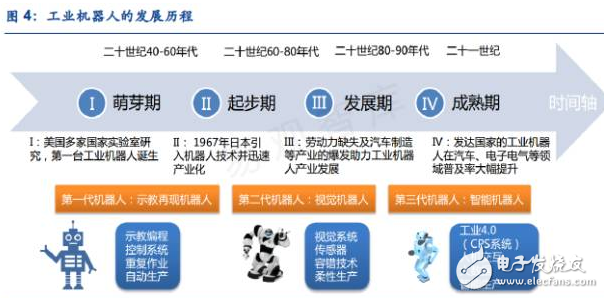
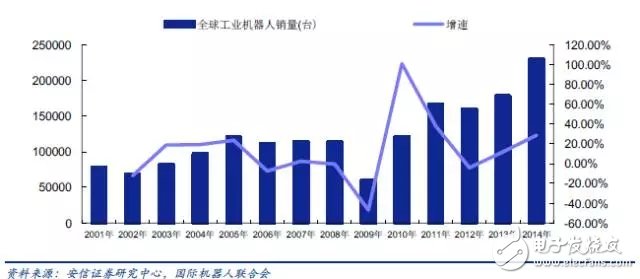
The industrial robots in Japan and Germany are leading the world, and the four families are the world's major industrial robot suppliers, mainly because they have first-mover advantages and technology precipitation. Japan has strong technical barriers in the development of key components of industrial robots (reducers, servo motors, etc.). German industrial robots have certain advantages in raw materials, body parts and system integration. Globally, Japan and Europe are the main producers of industrial robots. ABB, FANUC, KUKA and YASKAWA are the four major families of industrial robots. The industrial robot supplier, in 2013, the total income of the four family of industrial robots is about 5 billion US dollars, accounting for about 50% of the global market share.

Industrial robots have high development potential in China
China has become the largest consumer market for industrial robots, and the economy is still improving.
Compared with Japan, Germany and the United States, which have developed industries, the growth rate of demand for industrial robots in China is almost the same as that of them, but the growth rate has been relatively high. Before 2013, Japan has been the world's largest industrial robot market, but since 2011, the growth rate of Japanese industrial robots has been relatively flat. In 2013, China's industrial robot sales became the highest in the world. In 2014, China's industrial robot sales reached 57,096 units, an increase of 56.7% year-on-year.

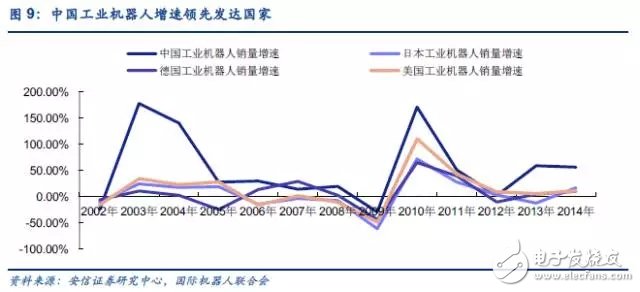
Will this trend remain in the future?
From the perspective of robot possession, the number of robots per 10,000 people is the density of robots. In 2014, China has 36 units/10,000, Japan has 314 units/10,000, Germany has 292 units/10,000, and South Korea has 478 units. /10,000 people, Taiwan has 138 units/10,000 people, and the global average is 66 units/10,000 people. China's robot possession density is not only ten times different from that of advanced industrial countries, but also has a doubling of space compared with the global average. This gap also indirectly shows the demand space of future industrial robots.

From the cost recovery period of the robot, it will. According to the National Bureau of Statistics, the average annual wage of employed persons in China's manufacturing urban units has increased from 30.916 million yuan in 2010 to 51.369 million yuan in 2014, with an average annual growth rate of 13%. According to China Industrial Information Network, the cost of industrial robots is decreasing by 4% year by year. Taking the 165KG six-axis robot as an example, the recycling cycle will drop from 4.96 in 2010 to 1.22 in 2016. With the rise of labor costs and the aging of China, the huge and low-cost labor advantage in China is gradually losing, and it is increasingly difficult to recruit basic work. The cost of industrial robots will fall, and the payback period of robots will be further shortened, which will help robots gradually realize labor substitution.

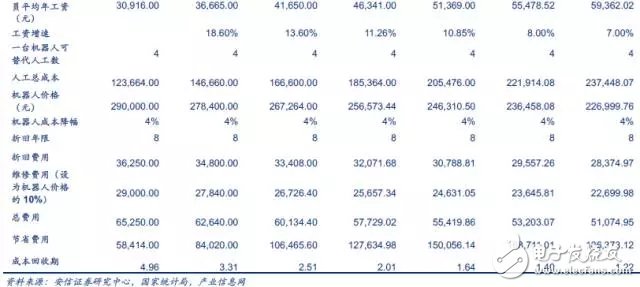
The rhythm of robot substitution is still not over. As the labor cost is further increased, the price of robots is further declining, and the robots are gradually expanding in the field of downstream applications, and the demand for robots is still keeping up.
Domestic robots welcome a huge alternative space
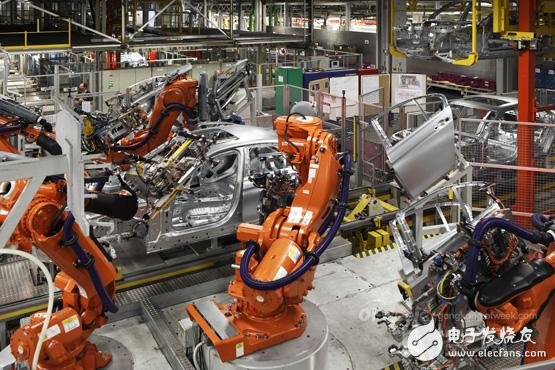
The market for industrial robots is currently monopolized by four Japanese, and the replacement space for localization is still large. China's industrial robot industry is developing late. Due to factors such as parts supply, related technologies and processing technology, industrial robots in the Chinese market are basically occupied by foreign robot brands dominated by ABB, KUKA, FANUC and Yaskawa. The domestic robot brand only accounts for about 8% of the market. China is in the downstream of the industrial chain of industrial robot production, and most manufacturers undertake low-value work such as secondary development of systems, customized components and after-sales services. With the rapid expansion of the demand for industrial robots in China, the independent research and development investment of domestic enterprises has been continuously increased, and the research and development capabilities have been continuously improved. In the next few years, the gap with international manufacturers will be narrowed, and domestic robots will fill a huge replacement space.
APM 120V smps power supply is widely used in automatic testing sector. The average conversion efficiency is 90%, the load regulation is low, which ensure stable output when the load is changing constantly. The programmable power supply supports standard SCPI communication protocol, which is convenient for user`s secondary development.
Some features of the adjustable power supply as below:
- Ultrafast respond time and high efficiency.
- Accurate voltage and current measurement capability
- Constant Power and wide range of voltage and current output
- Equips with LIST waveform editing function
- Support RS232/RS485/LAN/USB (standard) ,GPIB (optional)
- Master/Slave parallel and series operation mode for up to 10 units
- Built-in standard automobile electrical testing curves
- Full protection: OVP/OCP/OPP/OTP/SCP
- Voltage drop compensation by remote sense line.
- Have obtained CE,UL,CSA,FCC.ROHS
120V DC Power Supply,Lab DC Power Supply,DC Regulated Power Supply,High Voltage Power Supply
APM Technologies Ltd , https://www.apmpowersupply.com